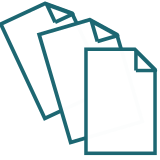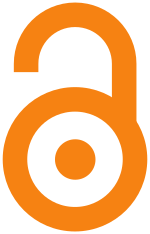Learning Open Government Techniques Online
Certified Computer Professional & Adjunct Lecturer, ANU Research School of Computer Science, Canberra, Australia
For Open Government, Linux Conference Australia, 29 January 2013, Australian National University, Canberra, Australia.
Tom Worthington discusses how to teach public servants and the
private sector contractors who support them how to impediment open
government. He argues that it is not sufficient to have open policies,
staff need to be shown how to do this and this can be done using
e-learning techniques.
Declaration of Open Government
The Australian Government now declares that, in order to promote greater participation in Australia’s democracy, it is committed to open government based on a culture of engagement, built on better access to and use of government held information, and sustained by the innovative use of technology. ...
Declaration of Open Government, Lindsay Tanner, Minister for Finance and Deregulation, AGIOM Website, 16 July 2010
Open government reforms create more transparency
... Principles, issued by the OAIC last year, set out the central values of open public sector information — information should be accessible without charge, based on open standards, easily discoverable, understandable, machine-readable and freely reusable and transformable.'
... difficulties included outdated agency record keeping systems, differing information management practices operating in the same agency and a lack of resources to reformat old documents for digital publication.
Open government reforms create more transparency, Media Release, Information Commissioner, 27 August 2012
Introduction: Cloud Computing
Computer > Internet "Cloud" > Shared Server > Records.
Is your cloud secure and green?
"Cloud computing" is a new version of 1980s information technology: share a large and expensive computer system (the server), over a computer network (the Internet "cloud") amongst many people using computers (including tablet computers and smart phones). The servers can run records management software and store records, making this a cloud computing application.
The "Privacy and Cloud Computing for Australian Government Agencies Better Practice Guide" (AGIMO, February 2012) cautions that off-shore cloud computing services may be in jurisdictions without privacy and information protection required by Australian law and foreign governments may access the data secretly. These privacy laws do not apply just to government agencies and this may also apply to financial institutions, telecommunications companies, hospitals and universities.
Another issue is the sustainability of cloud computing. By moving the server from the corporation to somewhere else, the environmental impact of the system may be hidden.
A cloud server can be used to provide access to records only to a very limited range of internal users in an organisation. However, the Internet is also used at the other extreme to provide "Open access", where documents are available freely to anyone. But event such open access has limitations, with the provider reserving some rights. With a Creative Commons licence, a government agency or academic will typically require that their work be at least acknowledged and they may limit what changes can be made.
The Australian Government issued a Declaration of Open Government, In July 2010. Changes were then made to FOI legislation.
Fostering Open
- GovCamp on innovation in government
- GovHack to create mash-ups with government data.
See: "Access to public sector information" by Roxanne Missingham, presentation for the Council of Australian University Librarians, September 2012
Having records in the cloud allows for innovative new uses of the information. In the case of the application of online techniques to government (so called Gov 2.0), data from different sources can be combined in new ways. To get Canberra public servants thinking about how to do this, a series of relatively informal GovCamps and GovHacks are held, where this is discussed and example "mash ups" created.
e-Learning in the Workplace
- Formal courses delivered online
- eBooks for content
- Online forums for discussion
- Students encouraged to produce a real report for their workplace
- Regular tutor feedback and assessment
Examples of Online Courses
The Future
The essential processes of the past must be maintained in a rush to the future.
Records in the cloud are still governed by standards and legislation, to be authentic, accurate and trusted
See: Records management and the cloud—a checklist, National Archives of Australia, 2011.





